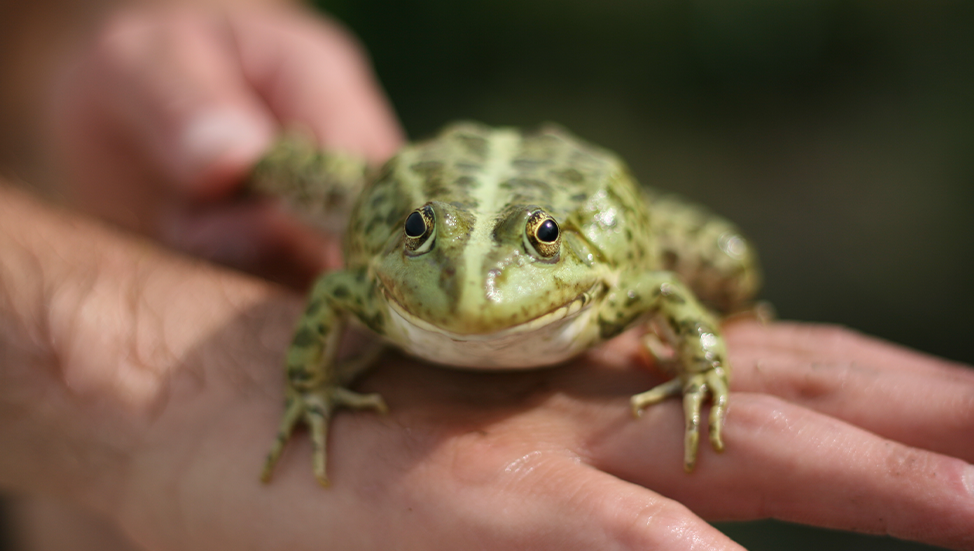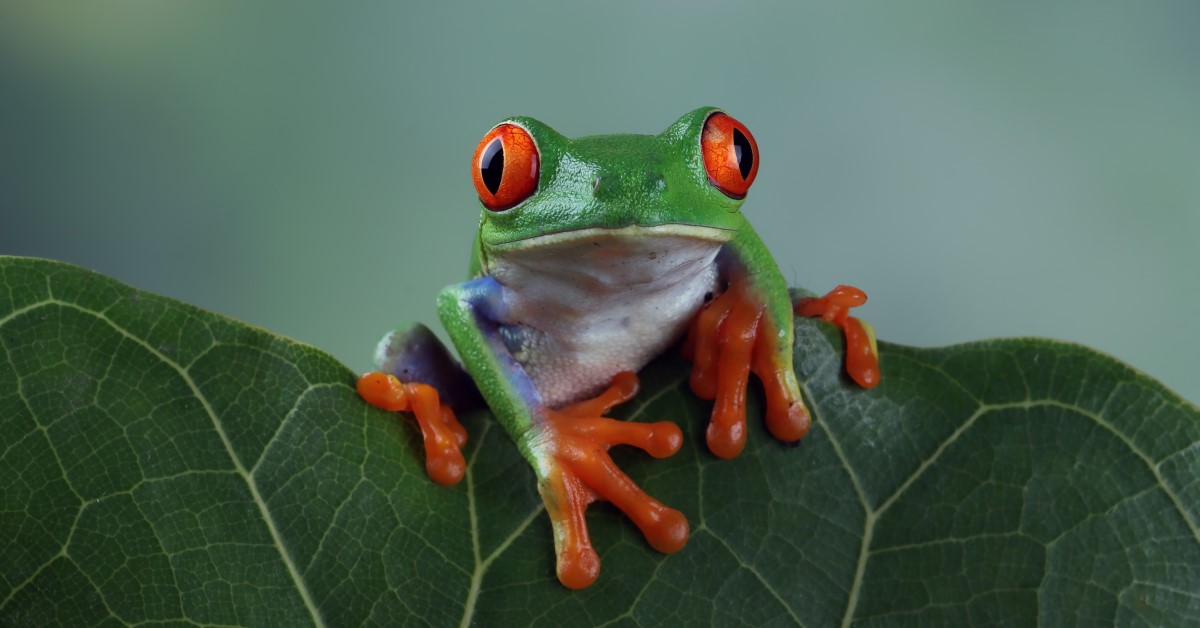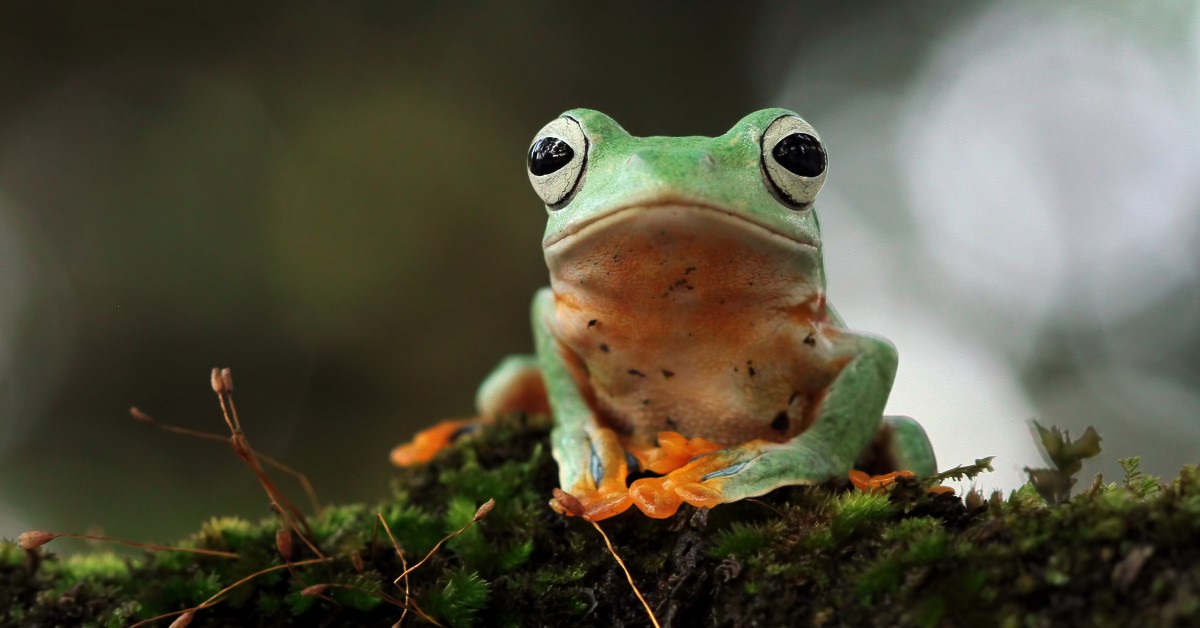A beginner's guide to basic frog care: Dart Frogs, Milk Frogs and more!
Hop through our care guide on the 6 most popular pet frogs and discover which frog is best for you!

Do you have childhood memories of catching toads or watching lazy frogs loll about on lily pads? Does a nighttime chorus of swamp or tree frogs relax and lull you off to sleep? Have you ever considered having a frog of your own to recreate your fond frog memories? Frogs can make wonderful pets, but they do require special care; we’ve selected 6 frog species that are particularly trouble-free if you are a first-time frog owner.
Dart Frog
Although ferocious in their natural habitat, these little critters, also known as poison arrow frogs, are perfectly harmless when in captivity. Dart Frogs come in a variety of bright and intense colors that include deep shades of red, blue, gold and green. Even though they are petite at approximately 1.5 inches long, they do well in a 20 gallon glass terrarium. For them to thrive, the enclosure needs to be kept around 75 degrees and be filled with live roots, plants, and a small body of water. As is true with most frog species, handling your Dart Frog can be hazardous to its health because of its delicate skin. With good care, you can expect your Dart Frog to live about 10 years.
Red Eye Tree Frog
These visually stunning creatures are known for their brilliantly colored bodies of green, yellow, and blue topped by their dazzling big red eyes. In addition to their incredible visual appeal, they are also wonderful pets. As one of the larger frog species, they need a larger terrarium, approximately 15 to 20 gallon tank that is filled with jungle plants. You should not put more than 2 frogs in this enclosure, however, as they might get territorial. In addition, they are quite sensitive and need controlled humidity, temperature (75 to 80 degrees) and UVB light. With attention to the necessary detail for their care, there’s no reason a beginner can’t create an environment where their new friend can thrive. You can expect your Red Eye Tree Frog to live for about 4 years.
African Bullfrog
Another larger-sized frog, the African Bullfrog is a fascinating creature who spends much of his life in the wild burrowed into the earth. The males outsize the females and can grow to 10 inches long and up to 4.5 pounds, so a minimum of a 20 gallon tank is definitely necessary for these guys. These frogs tolerate handling more than some other species and don’t require the rigid temperature and humidity care requirements as some other varieties. However, with good care, this frog can live as long as 35 years!
Pacman Frog
Found naturally in South America, the Pacman Frog comes in colors ranging from orange and brown to lime green! These are also a larger species that can grow to as long as 7 inches. They are known for their astonishingly large mouth as well as their sharp teeth, all of which they need to fiercely protect their habitats in the wild. These frogs do well in captivity but it’s important for their owners to wear gloves when handling them. Pacman frogs need a 15 to 20 gallon tank kept at an even 75 degrees. Maintaining proper humidity levels and providing them ample substrate to burrow in are the two essentials for their health and well-being. You can expect your Pacman Frog to live for 10 to 12 years if cared for properly.
Tomato Frog
These comparatively hearty and brilliantly red-colored frogs are among the smallest of pet frogs at 2.5 to 4 inches long. They are also burrowers, which is quite entertaining to see. A very popular pet choice because of their size and color, they are also among the easiest of frog species to care for. A 10 gallon tank is acceptable for a single Tomato Frog, but a 20 gallon is much better, especially if you have multiple frogs. They tolerate a wider temperature range as well – from 65 to 85 degrees. The tank also needs ample substrate, about 3 inches in depth, to accommodate their burrowing needs. These little guys can live to at least 10 years of age.
Amazon Milk Frog
A recently discovered frog species, these frogs have unusual coloring and markings with mint-green bodies punctuated by brown bands and spots. When threatened in the wild, they produce white secretions, which is how they got their name. These frogs aren’t thrilled with being handled but are otherwise easy to care for. A 15 to 20 gallon tank filled with tree branches for perching, live plants, and a water bowl will suit them well. This fellow also tolerates temperatures swinging from 75 to 85 degrees. Overall, you can expect your Amazon Tree Frog to grow from 3 to 5 inches long and live for 5 to 10 years.
General Considerations
Now for some additional things to consider as you embark upon a fun-filled life with your new frog.
- Frogs have delicate skin, so if you’re looking for a pet to cuddle with, a frog is not the pet for you.
- Research and/or talk to a knowledgeable source to find out what your frog needs in terms of temperature, humidity, diet and enclosure.
- Before you bring your new pet home, be sure to fully set up their habitat and establish a maintainable level of temperature and humidity before introducing your new pet.
- Frogs are carnivores and eat live fruit flies, crickets, worms, caterpillars, moths and grasshoppers. If you purchased your frog at a pet store, you should be able to find all these there, or on https://www.joshsfrogs.com/ . Be sure to buy an ample supply when you bring your pet frog home for the first time.
- Don’t worry if your frog doesn’t move around very much. The larger ones, like African Bullfrogs, tend to hang out quietly much of the time, while some of the smaller ones, like Dart Frogs, can be quite bold and active. All in all, every frog will be different, so take the time to get to know yours!
Ready to start saving money on pet wellness care?
Then take a look at Mint Wellness, the pet wellness plan that provides fast reimbursement on routine pet care. Save on vaccinations, wellness exams, preventatives, dental, and more!
Learn More


